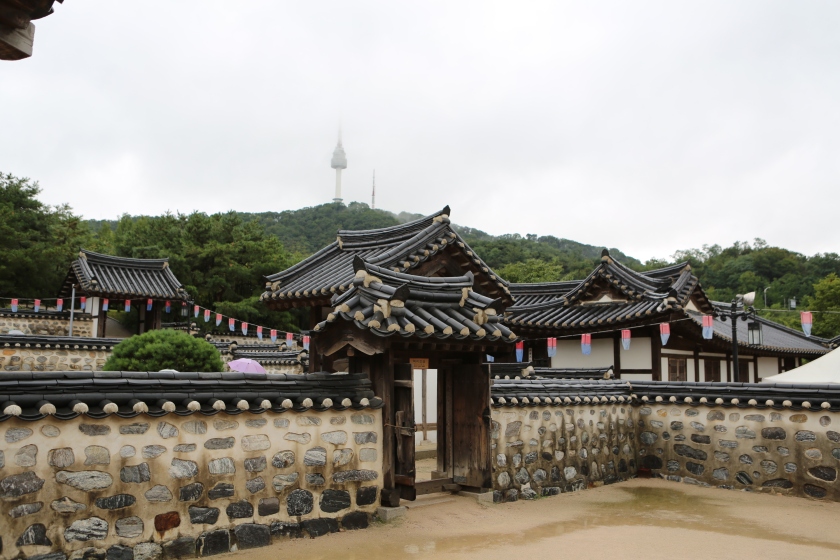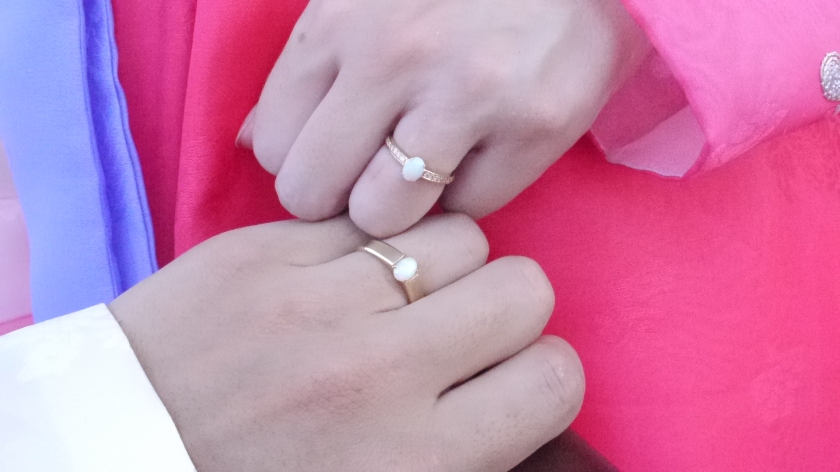In honor of Valentine’s Day and our five month anniversary, today I’d like to talk about our wedding last year in Seoul.
My husband and I met while I was doing a summer program in Seoul, and after a year of traveling back and forth between Yokohama and Seoul we decided to get married.
In an international marriage there are a lot of things to consider, but one of the first big decisions is where to get married. Japan was out because it would limit the number of his friends and family who could attend, and wasn’t any closer to my family. We decided against America because it would mean arranging things long distance, or leaving the whole process to my parents. Seoul was the ideal choice because all of his friends and family could attend, my close friends from Japan could make the trip, and my immediate family could see Korea. Also, organizing a wedding in Korea was surprisingly stress free.
Next we had to decide what kind of wedding to have. In Korea there are two main choices: a western style wedding at a wedding hall, or a traditional Korean style wedding. We both agreed right away that a wedding hall wedding was too boring and impersonal. Not that there’s anything wrong with that. If you dream of wearing a fancy white dress and having a western style ceremony that’s fine. But for me the wedding halls seem like “wedding factories” putting you through an assembly line of ceremonies and turning out many multiple couples a day. Plus I thought if I am going to invite people from Japan or America to attend it should be something unique. The traditional wedding seems to be very popular with international couples in Korea, probably for very similar reasons.

Being on a budget, we decided to get married at Namsangol Hanok Village (남산골한옥마을) (Korean site, there are links to other languages on the right side). This is a kind of outdoor museum of tradtional Korean houses at the foot of Namsan Mountain, and worth visiting just for the experience. (Access from Chungmuro Station, or walk about 15 minutes from Myeongdong.) On weekends, you can get married here in a traditional ceremony for relatively little money, but there are a few small catches. The first is that they really only have facilities for outdoor weddings. If it rains, the bride and groom will be moved inside, but the guests have to watch from tents outside, which is a problem if you have a lot of guests. The other caveat is that the trade off for a cheap wedding is that your wedding is essentially one of their tourist attractions, open for anyone to see. If you don’t have a problem with that you are good to go, and if you are a tourist it is definitely a worthwhile experience. Weddings are done on weekends in the spring and fall at 11:00, 1:00 and 3:00, but of course it does depend on there being couples to get married. Just remember that while the website calls them “reenactments” they are real couples’ actual weddings, so try to respect them and their invited guests.




As for our wedding day…
It rained the entire week leading up to the wedding, and my mom and sister got very wet walking from their hotel in Myeongdong to the ceremony that morning, but by the time for taking pre-wedding pictures it had thankfully stopped raining, and by the time the ceremony itself started it had dried out quite a bit. That was good because in the Korean tradition his parents had invited everyone they know – they sent 447 invitations through the mail, and handed out even more in person to close friends and family. The final tally for guests was about 300.
The thing that surprised me the most was the lack of any kind of rehearsal at all. There was a quick practice of jeol (절), or bowing, prior to the ceremony, and that was it – no explanation of the order or what would happen, let alone any kind of run through. There are, however, attendants who stay by you the entire time and tell you what to do. Luckily, I could understand just enough Korean to follow their instructions. My friends told me later that it looked like I knew what I was doing, so I guess that’s what matters most.
The other thing I remember clearly was bowing a lot, and how sore I was the next day because of it! During the ceremony itself there was a lot of standing up and kneeling down and of course bowing, but then there was the pyebaek (폐백) ceremony afterwards. This involves greeting the new in-laws and bowing to them. My husband’s parents have a total of eleven siblings between them, so that’s a lot of bowing.




Overall, it was a really great day, and exactly what we wanted in a wedding. There is probably a lot more to say, but I’ll save that for another day.




